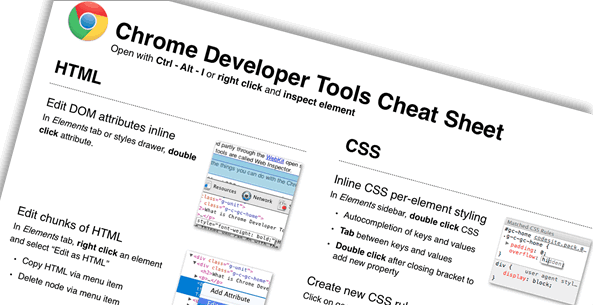A quick 365 days after we launched the project, the community finished up 2.0 today! Briefly, what’s new:
- We shifted to using normalize.css instead of the bulldozer reset.css (and base) approach. This ends up being smaller, faster, and easier to develop with.
- IE6 users will now be prompted to install Chrome Frame by default. It’s time. :)
- The build script continues to get massively improved: any css
@imports get inlined into your file before it gets concatenated with other files and minified together, the application cache’s manifest is generated automatically for you if you want to take your app offline, also this whole build process is way faster now. - Build script also has optional tasks for CSSLint, JSHint, splitting your CSS into modules, and more customizability.
- Added respond.js to allow true responsive development; use media queries with full cross-browser support now!
- PNGFix, Handheld.css removed along with lots of other smart removals. The full h5bp payload is now smaller and faster than ever.
View the much larger/detailed++ announcement at h5bp.com/#v2.
We’ve also added Mathias Bynens and Nicolas Gallagher, two very talented frontend researchers and developers, to the core development team.
Thanks to all the many many awesome code contributions, discussions, and most importantly research and documentation that lead to world-class front-end development!
Thanks: alrra, Adeel Ejaz, David Murdoch, Jonathan Fielding, Robert Ros, Mathias Bynens, Nicolas Gallagher, Mickael Daniel, Jonathan Verrecchia, Calvin Rein, Rob Larsen, William Meleyal, Bruno De Barros, Mike Almond, Frank, Joey Baker, Ben Word, Mike Botsko, Carlos Rosquillas, Todd H. Gardner, rdeknijf, John Attebury, Ryan Seddon, Dayle Rees, Ryan Smith-Roberts, Brian Blakely, Steve Heffernan, Barney Carroll, Osman Gormus, Jason Tokoph, See Guo Lin, Jeremey Hustman, James Williams, John-Scott Atlakson, stereobooster, walker, François Robichet, leobetosouza, Matthew Donoughe, Patrick Hall, Andy Dawson, Daniel Filho, Clément, Joe Morgan, Han Lin Yap, Gregg Gajic, Michael Cetrulo, Robert Doucette, lexadecimal.com, Adam Diehm.. and more people I’m sure… like Gavrisimo ♥ and Guillaume Moulin (Ping me and I’ll add you! (sorry!)
Join the fun
So feel free to dig into the 2.0 code and join the fun development community at our github issue tracker where we welcome all frontend hackers and researchers. Hop on the follow train of @h5bp for project news as well. Thanks everyone


